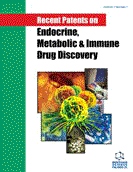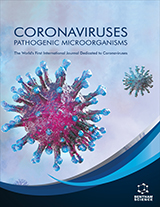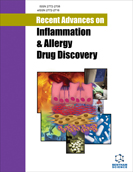Abstract
Malaria is one of the most widespread infectious diseases in the world. Emergence of multi-drug resistant Plasmodium strains makes it crucial to identify new classes of compounds for anti-malarial therapy. Novel anti-malarial compounds from natural sources (Gomphostema niveum) as well as synthetic chemicals (5-aminolevulinic acid) have been reported in recent patents. Plasmodium falciparum leucyl aminopeptidase (PfA-M17) is a validated target for antimalarial drug development. However, known aminopeptidase inhibitors beset with the problem of non-specificity. Therefore, 3D structural models of PfA-M17 human homologs, Leucine aminopeptidase3 (hLAP3) and probable leucine aminopeptidase (hNPEPL1) were predicted for molecular docking based screening of potential inhibitors for their off target activity. Comparison of IC50 and docking scores of highly active hLAP3 inhibitors shows good correlation (r2≈0.8). Further, docking analysis with potential PfA-M17 inhibitor Compound-X (identified through virtual screening) shows much higher binding affinity towards PfA-M17 (docking score -11.44) than hLAP3 (docking score -4.26) and hNPEPL1 (docking score -5.08). This lead compound, Compound-X can act as a scaffold for further increasing PfA-M17 binding affinity and hLAP3 and hNPEPL1 3D structure models will be useful for screening of PfA-M17 specific inhibitors.
Keywords: Adverse drug event, drug designing, drug toxicity, homology modeling, infectious disease, in silico screening, malaria, molecular docking.
Recent Patents on Endocrine, Metabolic & Immune Drug Discovery (Discontinued)
Title:Modelling of Human Leucyl Aminopeptidases for in silico Off Target Binding Analysis of Potential Plasmodium falciparum Leucine Aminopeptidase (PfA-M17) Specific Inhibitors
Volume: 8 Issue: 3
Author(s): Shakti Sahi, Utkarsh Raj, Meenakshi Chaudhary and Vikrant Nain
Affiliation:
Keywords: Adverse drug event, drug designing, drug toxicity, homology modeling, infectious disease, in silico screening, malaria, molecular docking.
Abstract: Malaria is one of the most widespread infectious diseases in the world. Emergence of multi-drug resistant Plasmodium strains makes it crucial to identify new classes of compounds for anti-malarial therapy. Novel anti-malarial compounds from natural sources (Gomphostema niveum) as well as synthetic chemicals (5-aminolevulinic acid) have been reported in recent patents. Plasmodium falciparum leucyl aminopeptidase (PfA-M17) is a validated target for antimalarial drug development. However, known aminopeptidase inhibitors beset with the problem of non-specificity. Therefore, 3D structural models of PfA-M17 human homologs, Leucine aminopeptidase3 (hLAP3) and probable leucine aminopeptidase (hNPEPL1) were predicted for molecular docking based screening of potential inhibitors for their off target activity. Comparison of IC50 and docking scores of highly active hLAP3 inhibitors shows good correlation (r2≈0.8). Further, docking analysis with potential PfA-M17 inhibitor Compound-X (identified through virtual screening) shows much higher binding affinity towards PfA-M17 (docking score -11.44) than hLAP3 (docking score -4.26) and hNPEPL1 (docking score -5.08). This lead compound, Compound-X can act as a scaffold for further increasing PfA-M17 binding affinity and hLAP3 and hNPEPL1 3D structure models will be useful for screening of PfA-M17 specific inhibitors.
Export Options
About this article
Cite this article as:
Sahi Shakti, Raj Utkarsh, Chaudhary Meenakshi and Nain Vikrant, Modelling of Human Leucyl Aminopeptidases for in silico Off Target Binding Analysis of Potential Plasmodium falciparum Leucine Aminopeptidase (PfA-M17) Specific Inhibitors, Recent Patents on Endocrine, Metabolic & Immune Drug Discovery (Discontinued) 2014; 8 (3) . https://dx.doi.org/10.2174/1872214808666141001125057
| DOI https://dx.doi.org/10.2174/1872214808666141001125057 |
Print ISSN 1872-2148 |
| Publisher Name Bentham Science Publisher |
Online ISSN 2212-3334 |
 38
38Related Articles
-
Breast Cancer Biomarkers: Risk Assessment, Diagnosis, Prognosis, Prediction of Treatment Efficacy and Toxicity, and Recurrence
Current Pharmaceutical Design Application in Electrochemistry of Graphene-Modified Electrodes
Micro and Nanosystems The Search for Immunosuppressive Therapies to Induce Tolerance in Organ Transplantation
Endocrine, Metabolic & Immune Disorders - Drug Targets Notch Signaling: A Potential Therapeutic Target in Prostate Cancer
Current Cancer Drug Targets Curcumin as an Adjuvant to Breast Cancer Treatment
Anti-Cancer Agents in Medicinal Chemistry The Effects of CCRC on Cognition and Brain Activity in aMCI Patients: A Pilot Placebo Controlled BOLD fMRI Study
Current Alzheimer Research Serotonin and Obesity
Current Medicinal Chemistry - Central Nervous System Agents Identifying Risk Factors for Clinically Significant Diabetic Macula Edema in Patients with Type 2 Diabetes Mellitus
Current Diabetes Reviews Retinoids: Impact on Adiposity, Lipids and Lipoprotein Metabolism
Recent Patents on Endocrine, Metabolic & Immune Drug Discovery (Discontinued) Update on ICOS: A Possible Target for Turning-Off Autoimmunity
Recent Patents on Endocrine, Metabolic & Immune Drug Discovery (Discontinued) Raloxifene and Cardiovascular Health: Its Relationship to Lipid and Glucose Metabolism, Hemostatic and Inflammation Factors and Cardiovascular Function in Postmenopausal Women
Current Pharmaceutical Design Multiple Roles of the Extracellular Matrix in Inflammation
Current Pharmaceutical Design Current State of ERG as Biomarker in Prostatic Adenocarcinoma
Current Cancer Drug Targets Real-time Medical Visualization of Human Head and Neck Anatomy and its Applications for Dental Training and Simulation
Current Medical Imaging Balaglitazone: A Second Generation Peroxisome Proliferator-Activated Receptor (PPAR) Gamma (γ) Agonist
Mini-Reviews in Medicinal Chemistry Electrotransfer into Skeletal Muscle for Protein Expression
Current Gene Therapy Nutritional Support in Cancer
Current Nutrition & Food Science Effects of the Antidiabetic Drugs on the Age-Related Atrophy and Sarcopenia Associated with Diabetes Type II.
Current Diabetes Reviews Association Between Polycystic Ovary Syndrome and Metabolic Syndrome
Current Medicinal Chemistry Determinants of Longevity: Genetics, Biomarkers and Therapeutic Approaches
Current Pharmaceutical Design






















